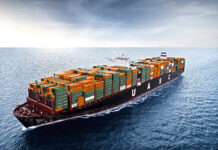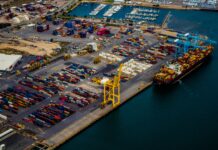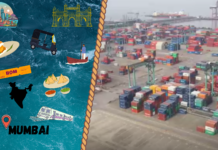
Liner companies chasing the high returns on the major trade lanes are shifting tonnage from secondary services, with consultancy Xeneta warning shippers and forwarders that capacity constraints in second string services will force up rates.
Hong Kong-based Linerlytica believes these increases may have already begun with consultancy reporting today that capacity injections have been seen in the Indian subcontinent, Latin America and US West Coast routes, “where freight rates are the most lucrative currently”.
As a result of the shifting demand and capacity Xeneta warned: “The message to shippers who use secondary trades is, ‘enjoy it while it lasts’, because it is likely increasing spot rates will trickle down from the major trades.”
Services from Asia to Indian Subcontinent, Latin America and US West Coast trades have all seen significant increases in capacity in the last month, reported Linerlytica, “with capacity rising by 9.0%, 6.0% and 4.7% respectively with a slew new services and extra loaders added since June.”
Additions to capacity in these trades is expected to continue through August, keeping the charter market tight as carriers are still short of tonnage needed on these routes.
Overall, global container volumes have surpassed the 2021 record by 150,000 TEUs, reaching 74 million TEUs in the first five months of this year, as Chinese exports boomed and shippers front loaded their orders.
Xeneta figures, sourced from Container Trade Statistics, also show a 5.2 million TEUs increase compared to volumes seen from January to May 2023, with this year’s May volumes alone topping 15.9 million TEUs.
This surge in demand has encouraged liner shipping companies to shift capacity from less lucrative services on to the high yield trades, but the increased tonne miles has also played a part, with vessels now circumnavigating the African Cape, rather than transiting the far shorter Suez Canal to Europe.
“Container-miles have increased by 17.9% globally in 2024 to-date compared to the same period in 2023, which is mainly the result of the longer voyages around Africa. Had ocean container carriers continued to utilise the Suez Canal, teu-miles would have increased by a lesser – but still significant – 8.6%,” confirmed Xeneta.
The effect of the Red Sea crisis has been to absorb massive amounts of standing capacity, but the available capacity, that is the weekly capacity levels, have decreased, causing congestion, slowing vessel port calls and ultimately reducing capacity further.
Whereas increasing demand on backhaul trades has little significant impact due to the high level of spare capacity in the backhaul market, said a Xeneta market briefing: “Any change in demand on the major deep sea fronthaul trades is quickly felt in the market.”
In the first five months of 2024, fronthaul volumes increased by 10.4% compared to the same period in 2023 while growth on backhaul and intra-regional trades has increased by 4.4% and 5.5% respectively.
Spot rates on the European and US backhaul trades to Asia have softened substantially from their peak earlier this year, which was caused by the Red Sea crisis.
In contrast: “Spot rates on the fronthaul from the Far East into North Europe have increased by almost 150% since the end of April. From the Far East into the US East Coast and US West Coast, average spot rates have increased by 132% and 140% respectively.”
Mary Ann Evans
Correspodent at Large





